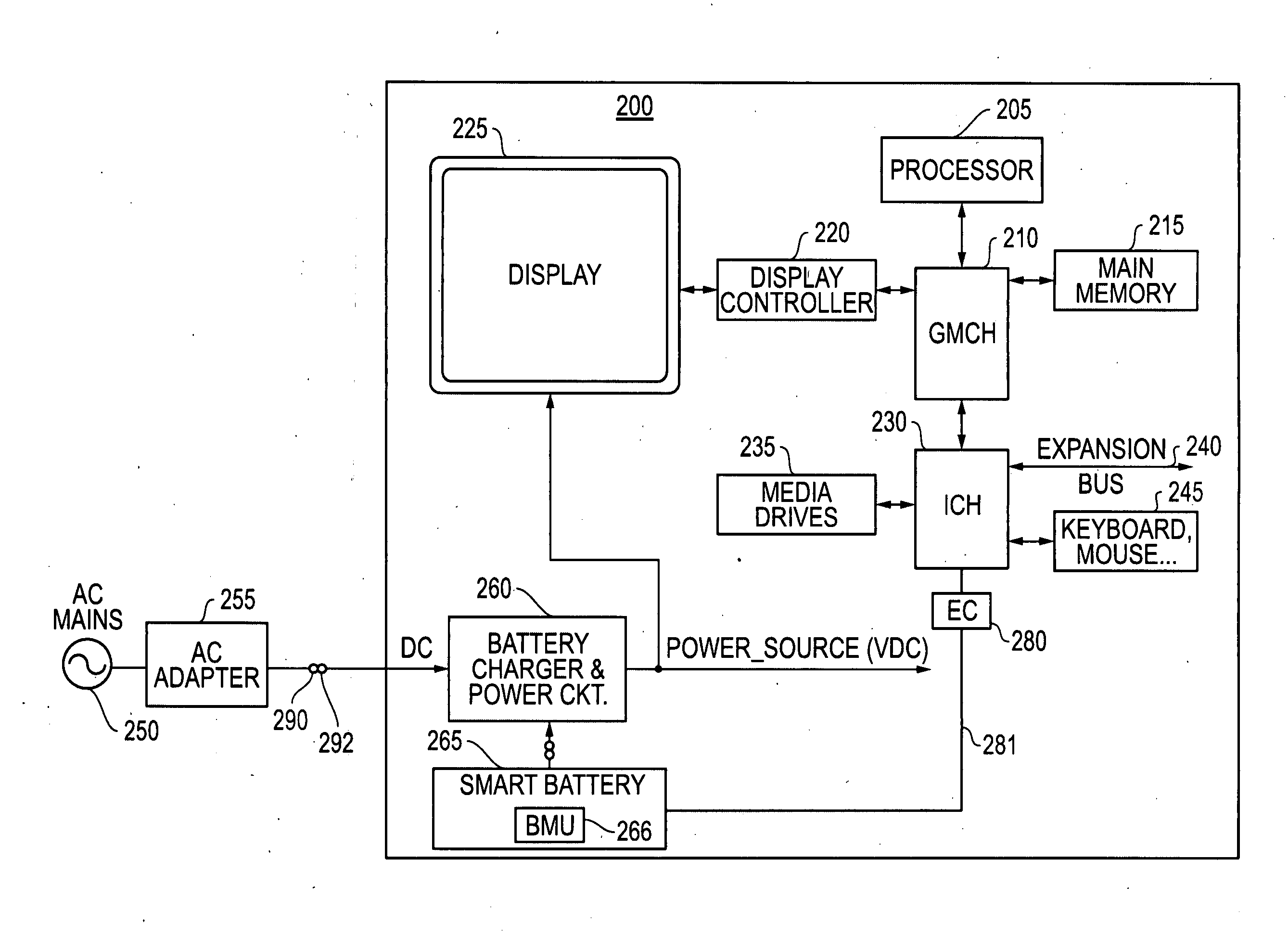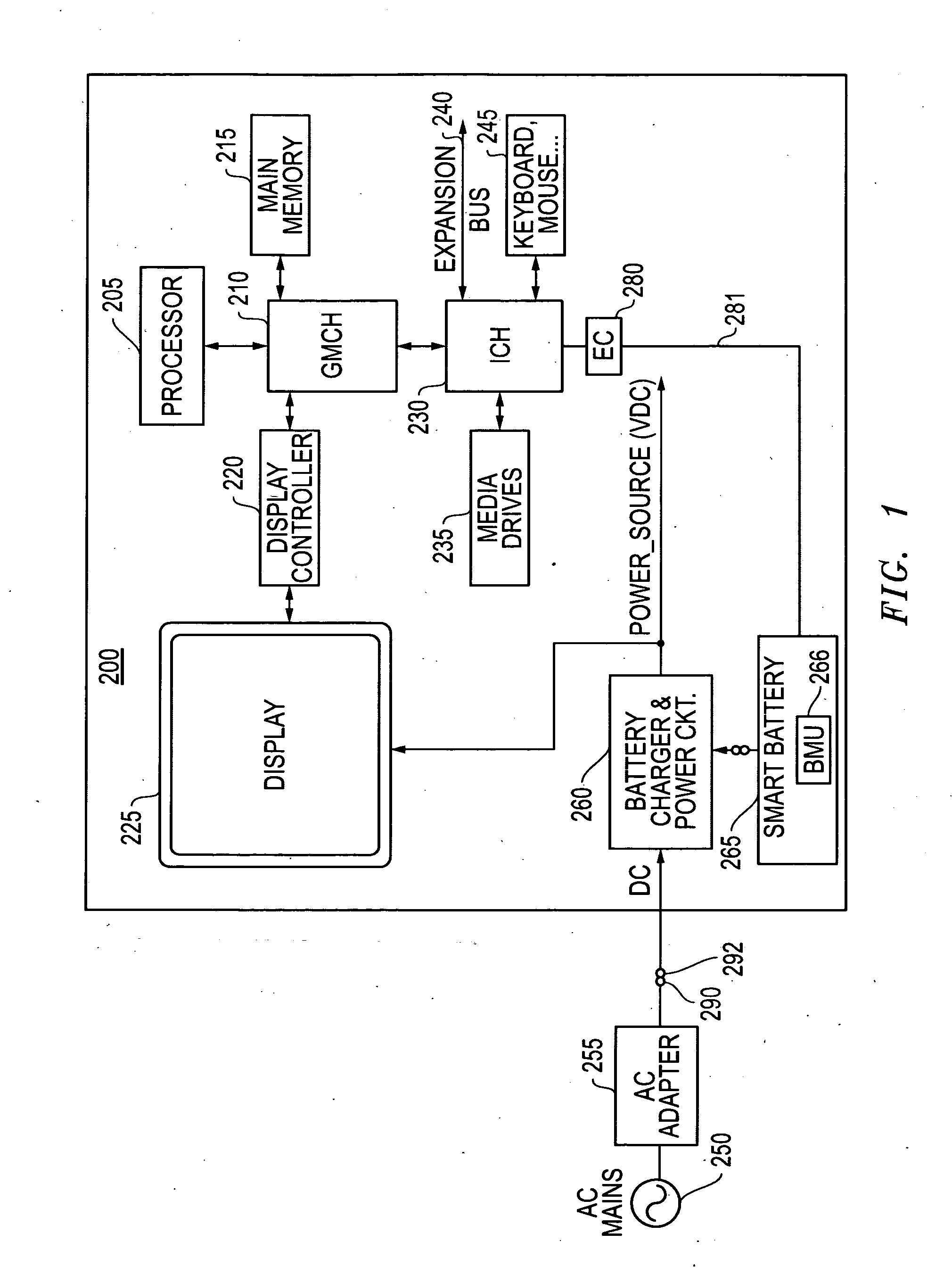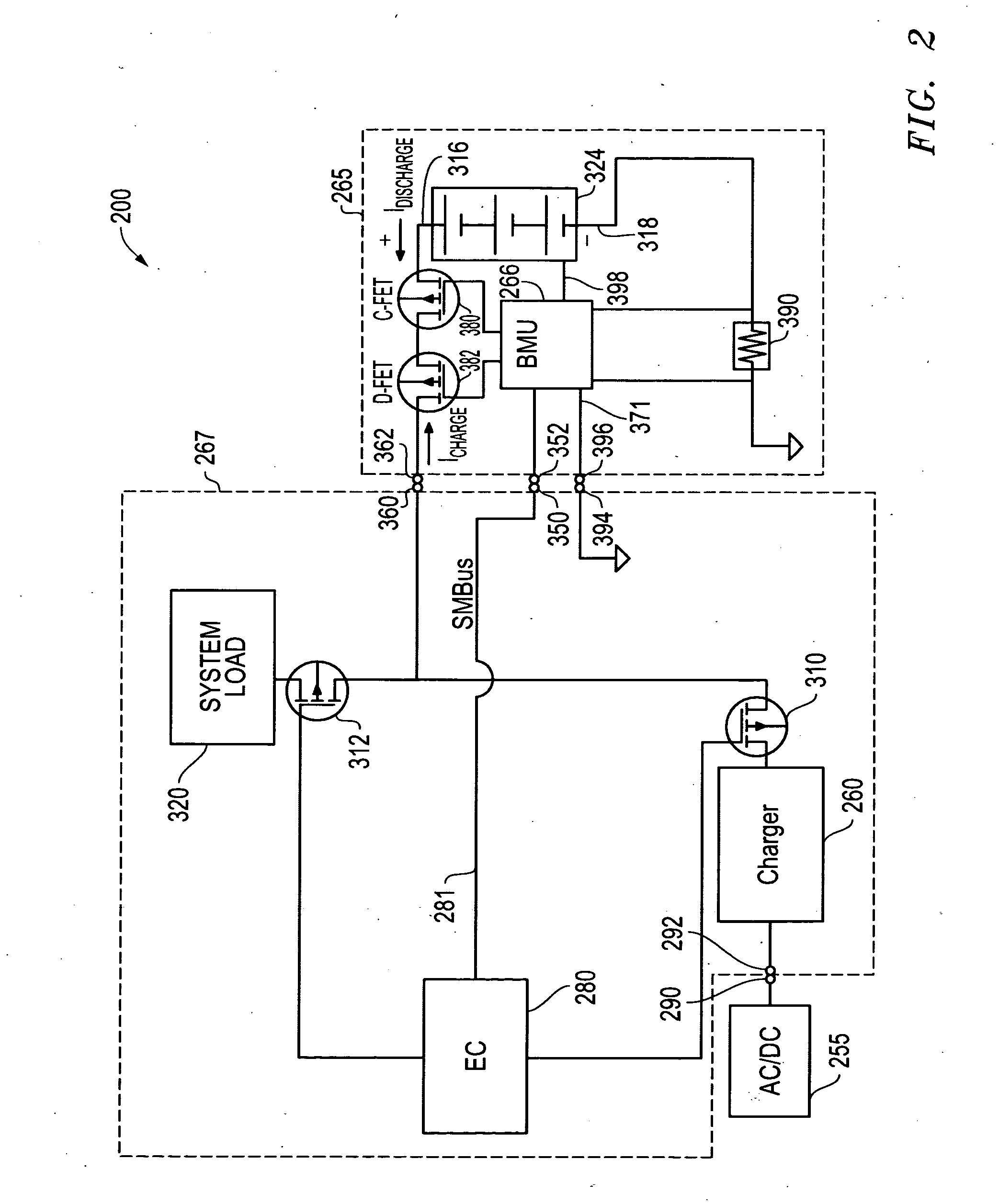[0005]In one exemplary embodiment, when a given battery cell / s of a multiple cell battery pack fails, the defective cell / s may be bypassed such that the defective battery pack may continue to operate and power an information handling system at a lower voltage, e.g., either permanently or until the user procures a suitable replacement battery pack. This is in contrast to conventional battery cells which go into permanent failure (shut down) mode immediately upon failure of one or more battery cell / s of the battery pack, thus inconveniencing the user and disabling the information handling system for potentially a lengthy period of time until a suitable replacement battery can be obtained or a source of AC power is made available.
[0006]In another exemplary embodiment, the interconnection of cells of a non-defective multiple cell battery pack may be selectively re-arranged to vary battery pack voltage at particular times or during particular information handling system operation modes, e.g., so as to reduce battery pack voltage when the information handling system is operating in a low power mode such as sleep or idle mode and / or so as to increase battery pack voltage when the information handling system is operating in a higher power mode such as fully awake mode or when processor or other system power load is increased. The non-defective battery pack may be then returned to an increased voltage, e.g., returned to full voltage operating mode when the information handling system returns to normal (fully awake) operating mode. Thus, the disclosed systems and methods may be implemented in one example to reduce battery pack voltage for a sleeping information handling system in a manner that increases power conversion frequency, as compared to experiencing the reduction in power conversion efficiency experienced by conventional information handling system battery packs when powering a sleeping information handling system.
[0007]In another exemplary embodiment, battery cell circuitry of a multiple cell battery system may be controlled by a single microcontroller or other suitable processing device, and / or with no communication among modules. Further, a microcontroller may operate to detect imbalance between modules of a multiple module battery system and to restore balance between the modules of the battery cell circuitry of the battery system by removing the defective or degraded cell / s from the main battery conductor path of the affected module, e.g., when imbalances occur between modules due to occurrence of defective or degraded battery cells. In this regard, when a defective or degraded cell / s is reported in one module of the battery system, all other modules may be re-configured to match (e.g., so as to balance the modules of the battery cell circuitry) in view of the defective or degraded cell / s of the affected module. If and when the microcontroller determines that balance can later be restored between the multiple modules with all battery cells inserted in the main battery conductor path of each module (e.g., due to discharge and charge cycling of the battery cells), the microcontroller may reinsert the removed cells back into the main battery conductor path of each module.
[0008]In one respect, disclosed herein is an information handling system, including: a system load; a battery system having a main battery conductor path coupled to power the system load, the battery system including battery cell circuitry including multiple battery cells coupled together in the main battery conductor path in at least one of series relationship, parallel relationship, or a combination thereof, and one or more switching devices coupled to selectively bypass or remove one or more of the multiple battery cells from the main battery conductor path of the battery cell circuitry; and at least one processing device coupled to control the one or more switching devices to selectively remove one or more of the multiple battery cells from the main battery conductor path of the battery cell circuitry.
[0009]In another respect, disclosed herein is a method of controlling a battery system of an information handling system, including: providing a battery system having a main battery conductor path coupled to power a system load of the information handling system, the battery system including battery cell circuitry including multiple battery cells coupled together in the main battery conductor path in at least one of series relationship, parallel relationship, or a combination thereof, one or more switching devices coupled to selectively bypass or remove one or more of the multiple battery cells from the main battery conductor path of the battery cell circuitry; and controlling the one or more switching devices to selectively remove one or more of the multiple battery cells from the main battery conductor path of the battery cell circuitry.
[0010]In another respect, disclosed herein is a replaceable smart battery pack configured for powering an information handling system, including: a main battery conductor path configured for coupling to power the system load; battery cell circuitry including multiple battery cells coupled together in the main battery conductor path in at least one of series relationship, parallel relationship, or a combination thereof; one or more switching devices coupled to selectively bypass or remove one or more of the multiple battery cells' from the main battery conductor path of the battery cell circuitry; and at least one processing device coupled to control the one or more switching devices to selectively remove one or more of the multiple battery cells from the main battery conductor path of the battery cell circuitry.
 Login to View More
Login to View More 


